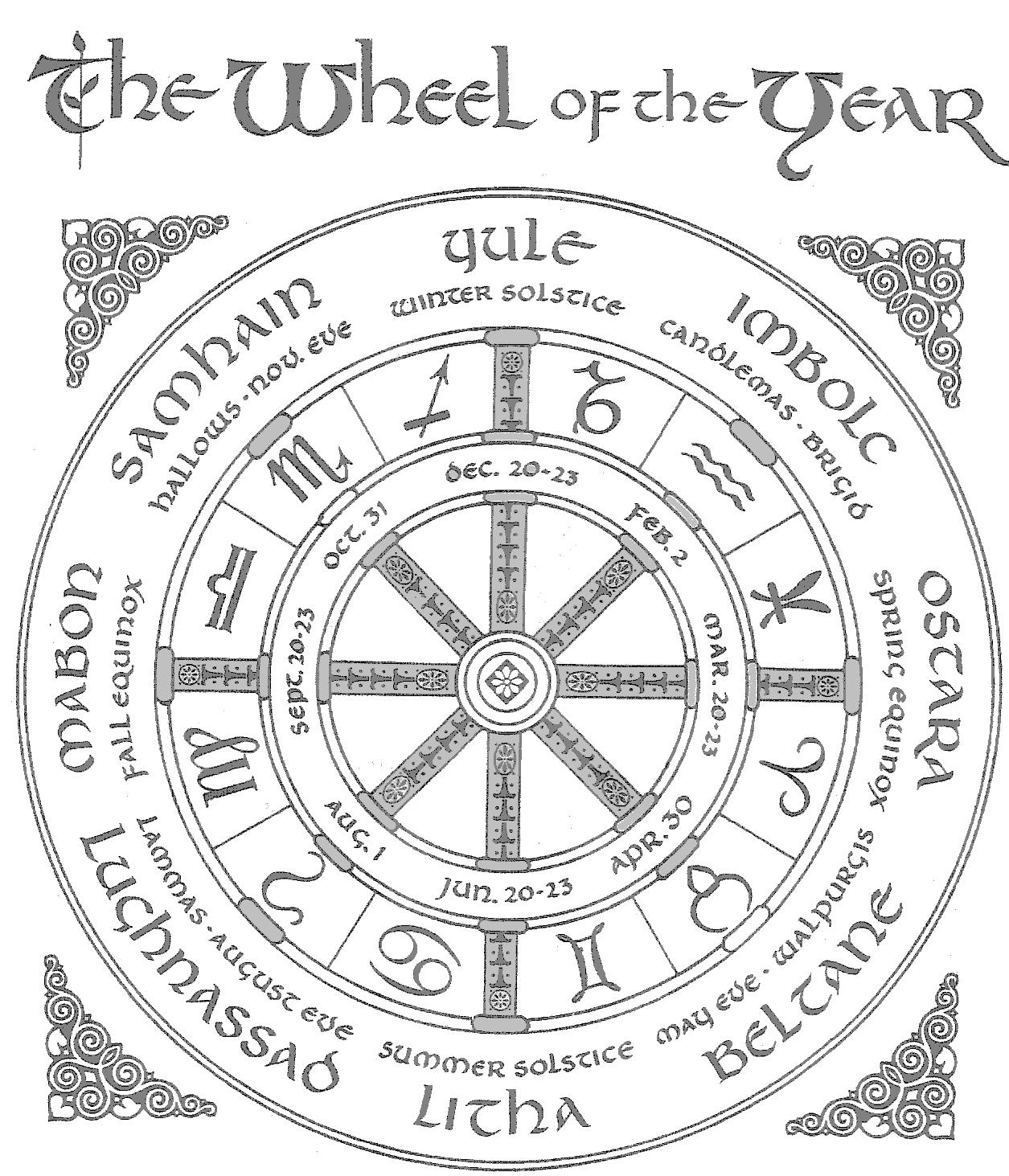prettylittlepagans:The Wheel of the Year The Wheel of the Year is an annual cycle of seasonal fest
prettylittlepagans: The Wheel of the Year The Wheel of the Year is an annual cycle of seasonal festivals, observed by many modern Pagans. It consists of either four or eight festivals: either the solstices and equinoxes, known as the “quarter days”, or the four midpoints between, known as the “cross quarter days”. The festivals celebrated by differing sects of modern Paganism can vary considerably in name and date. Observing the cycle of the seasons has been important to many people, both ancient and modern, and many contemporary Pagan festivals are based to varying degrees on folk traditions. In many traditions of modern Pagan cosmology, all things are considered to be cyclical, with time as a perpetual cycle of growth and retreat tied to the Sun’s annual death and rebirth. Yule/Winter Solstice: a festival observed by the historical Germanic peoples, later undergoing Christian reformulation resulting in the now better-known Christmastide. A celebration the beginning of longer days, as this is the shortest day of the year in terms of sunlight. Imbolc: the first cross-quarter day following Midwinter this day falls on the first of February and traditionally marks the first stirrings of spring. It is time for purification and spring cleaning in anticipation of the year’s new life. For Celtic pagans, the festival is dedicated to the goddess Brigid, daughter of The Dagda and one of the Tuatha Dé Danann. Among witches reclaiming tradition, this is the time for pledges and dedications for the coming year.Ostara/Spring Equinox: from this point on, days are longer than the nights. Many mythologies, regard this as the time of rebirth or return for vegetation gods and celebrate the spring equinox as a time of great fertility. Germanic pagans dedicate the holiday to their fertility goddess, Ostara. She is notably associated with the symbols of the hare and egg. Her Teutonic name may be etymological ancestor of the words east and Easter.Beltrane: traditionally the first day of summer in Ireland, in Rome the earliest celebrations appeared in pre-Christian times with the festival of Flora, the Roman goddess of flowers, and the Walpurgis Night celebrations of the Germanic countries. Since the Christianization of Europe, a more secular version of the festival has continued in Europe and America. In this form, it is well known for maypole dancing and the crowning of the Queen of the May. Litha/Summer Solstice: one of the four solar holidays, and is considered the turning point at which summer reaches its height and the sun shines longest. Luchnassad/Lammas: It is marked the holiday by baking a figure of the god in bread and eating it, to symbolize the sanctity and importance of the harvest. Celebrations vary, as not all Pagans are Wiccans. The name Lammas (contraction of loaf mass) implies it is an agrarian-based festival and feast of thanksgiving for grain and bread, which symbolizes the first fruits of the harvest. Christian festivals may incorporate elements from the Pagan Ritual. Mabon/Autumn Equinox: a Pagan ritual of thanksgiving for the fruits of the earth and a recognition of the need to share them to secure the blessings of the Goddess and the God during the coming winter months. The name Mabon was coined by Aidan Kelly around 1970 as a reference to Mabon ap Modron, a character from Welsh mythology. Among the sabbats, it is the second of the three Pagan harvest festivals, preceded by Lammas / Lughnasadh and followed by Samhain. Samhain: considered by some as a time to celebrate the lives of those who have passed on, and it often involves paying respect to ancestors, family members, elders of the faith, friends, pets, and other loved ones who have died. In some rituals the spirits of the departed are invited to attend the festivities. It is seen as a festival of darkness, which is balanced at the opposite point of the wheel by the festival of Beltane, which is celebrated as a festival of light and fertility. -- source link
